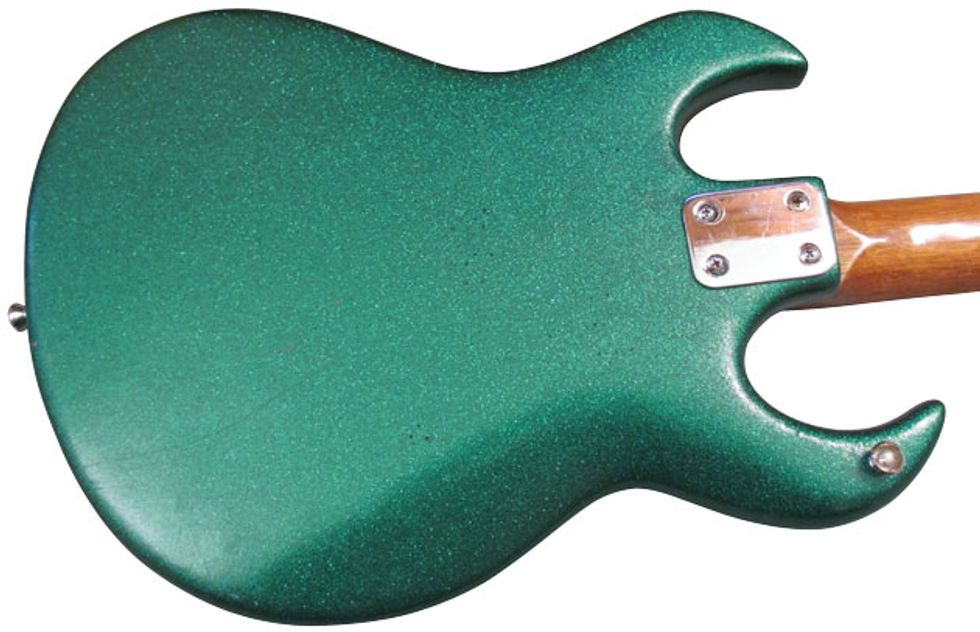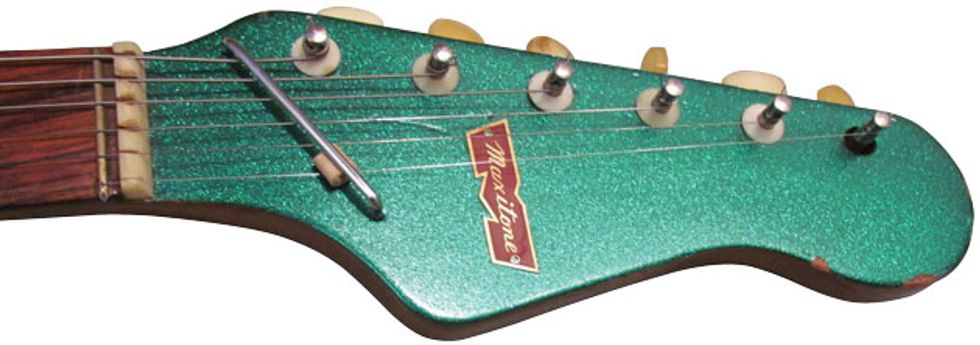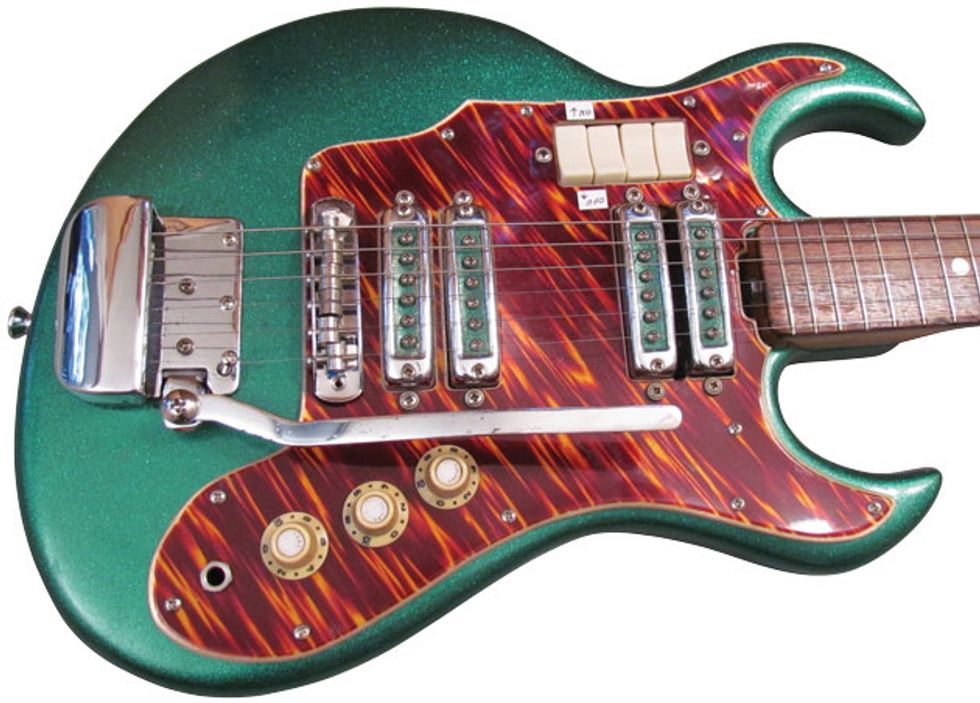Every now and then I spot a guitar that just floors me with its looks. This 1967 MaxiTone is one of those (Photo 1). I spotted this Japanese solidbody on eBay and it immediately knocked me out. Not only because of its four pickups, but that green-sparkle finish is so over the top. Just check out the back (Photo 2) and matching headstock (Photo 3).
Photo 2
These models originally came from the factory with a rather boring sunburst finish, but somewhere along the line that was replaced with emerald green metal-flake paint. Normally a refin on an older instrument will lower its resale value, but I think sometimes the right refin can actually improve a guitar’s worth if the original finish looked fairly pedestrian. Time will tell on this one.
The guitar spent some time on eBay with the seller lowering the “Buy It Now” price every week for a few weeks. When it reached $240, I could stand it no longer and pulled the trigger. Shipping was $40, but the seller said that if the shipping came to less than that, he would refund the difference. Shipping came to $17, and true to his word, he refunded $23, bringing my total to $257.
My MaxiTone arrived safely, and after testing it to make sure everything worked, I put on new strings and did a setup. The seller must have already done some work because the guitar was really easy to play and everything functioned properly—unusual for a ’60s Japanese electric.
Bottom Feeder Tip #289: Always test a guitar as soon as you receive it. If there’s a problem, it’s best to contact the seller immediately to resolve any issues before you waste your time working on something you might have to send back.
The moment of truth came when I plugged it in. Ah yes ... it’s good to hear the sound of the ’60s again.
Photo 3
Usually when a guitar has three or four pickups, they really interfere with my right-hand technique. But on this model, the pickups are grouped in pairs (Photo 4), and this leaves enough room between the pairs for fingerpicking—nice. Actually, that was one of the selling points for me.
I also like the old on/off rocker switches—one for each pickup—and this simple scheme yields a plethora of pickup combinations. The switches were a little scratchy, so I sprayed some contact cleaner on them, as well as on the volume and tone pots to clean up their sound.
Photo 4
The only problem I need to solve is the angle of the strings as they come over the bridge, heading into the trem. Sometimes I accidentally pluck the treble strings out of their saddles when I switch over to hybrid picking. Down the road I’ll need to find a way to create a steeper angle across the saddles, but without modifying the guitar and lowering its resale value. I’ll find a way because this guitar is worth the extra effort.
So is it a keeper? Oh yeah, I’ve never owned a guitar that sounds quite like it. Plus the color still floors me whenever I open the case!











![Rig Rundown: Russian Circles’ Mike Sullivan [2025]](https://www.premierguitar.com/media-library/youtube.jpg?id=62303631&width=1245&height=700&quality=70&coordinates=0%2C0%2C0%2C0)

















